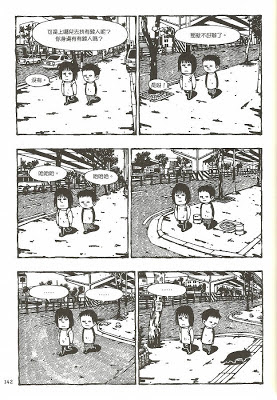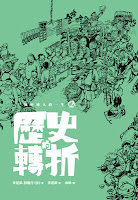Author:LI
KUNWU(李昆武.china)/P.
ÔTIÉ(french)
Publisher:France-KANA/USA-SelfMadeHero
Date:
France-2009/2009/2010
USA-2012
Pages:
France-254/198/271
USA-704
Binding:paperback
ISBN:France-978-2-5050-0608-4/978-2-5050-0761-6/978-2-5050-0882-8
USA-978-1906838553
All copyright of the picture is reserved to Li Kunwu, P. ÔTIÉ, KANA and SelfMadeHero
French cover
Hong Kong Cover
“A chinese life”, more than 700 pages in three volumes, is the autobiography of author Li Kun-Wu who come from the south-west of china – Yunnan provence, and collaborate with P. Ôtié as scenarist.
Li doesn't only tell his life, but also describe the development of the New China (from1949) from his born(1951), with three volume the age of father, the age of communist, and the age of money. Li didn't tell the story like an autobiography (as the first-person), but in a fiction way : there is a lot of dialogue, no monologue, and no third person description.
Story-telling
Li
is 60 years old now, he passed his childhood during the big jump and
the little red army, then he joined the army as a teenager. With a
background of a grandfather as a landlord, he finally became a member
of the communist with a lot of effort. Worked tough in the country
side during the culture revolution, at last he draws for the Yunnan
newspaper until now a day.
Two
authors present the change of People's Republic of China with small
Li to old Li. It's
different as the history book, and very close to life, we can see
that even in the chaos time, there is still life.
Both
of the authors don't have any experience of long story, but they make
a very good scenario and the story-board. For a story inside of 60
years histories and so many changes of the situation, they still
keep a lot of breathing space for the reader. They tell the story
with the chronic, so sometimes you will suddenly understand the
result about something which a character did a few years ago.
The
point of view is quite neutral, nothing is too extremed, not too
many critic and explication, there is only the true
story.
The
first volume show us the tough time of china with a child's eyes.
The
second volume is during the culture revolution. Even Li's father was
also send out by the unfairness, he didn't show the hate, the sorrow
like the end of the world, but just describe the everyday life of
each character. He show us what it was for the small people (compare
with the intellectual people). We can “see” what happened without
all the cliche and the tribulation. The third volume is talking about
the change in China after 80's, which is really pertinent.
Although
it is Li's autobiography, but he insert a lot of story of his friend
and family, to present a larger point of view. The cutting and the
composition is skilled and creative, for telling a story in three
volumes, it's really important.
Drawing style
I have to specially mention of Li's drawing. Before, his drawing is
more quick, smooth and humble, for giving a soul to his own story
(and also for satisfying the level of European comic I think ), he
found himself a style very contemporary and oriental in the same
time, a free and
unrestrained line, and a few-twisted perspective.
The
characters are realistic but full of individuality, everyone has his
face (between so many characters), and all the gestures show the
personalities. Often he show what the character think only with his
gesture or eyes but not with the word, all this kind of details
should come from Li's long experience and his good observation.
Sometimes
he uses a massive composition to show the mass of China, sometimes he
keeps a lot of “white” (like the chinese painting) to give a
breathing space. Not only using the text to show the opinion of
characters, but also using the pose and the eye contact to show
emotion, character, and the thinking. All this detail show how author
observe people in his daily life from long time.
Li
has made a tour of Yunnan by bike in his early life, and made some
drawing and recherche of the minority ethnic group, and as his real
job, art editor and photographer in Yunnan Daily newspaper, he really
controls the landscape and the people of Yunnan very well.
After
this successful work, which is translated in 8 languagse, Li Kunwu
has just published another documentary comic “Scars” in China,
and he is also working for the others two documentary comic with
French Publisher KANA.
*Please apology of my english, i don't use english in my everyday life, so there must be a lot of error, but i still want to show people all kind of documentary work, specially about Asia. If there is any error, and you want to correct them, please feel free to leave a message.
I also have a publishing house which produce Asia documentary graphic work, if you are interested in it, you can check out the website of SLOWORK PUBLISHING.















































